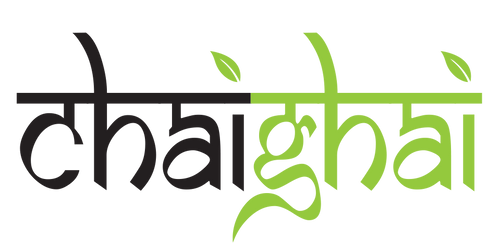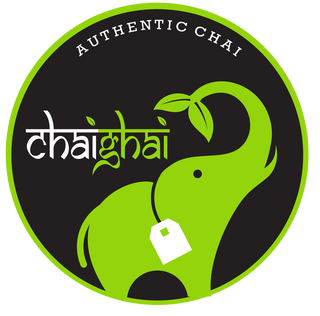"India is a longing, a thirst to attain truth"
-OSHO

Life is a journey which we seek to find contentment from within us. As far as we travel outward, we must travel equally inward. The goal since the inception of Chai Ghai was to change the world with every sip while providing the greatest chais and teas the world has to offer. Therefore, we have to travel the world, seek the greatest tea masters and try every chai and tea we can find to make this goal a reality. In June 2022, our team travelled the spice route to India to go on a delicious chai and spice tour. Constantly trying to learn more about the evolution of tea, masala spices as well as the modern developments on the ancient tradition of merging both, we decided to go to the home Chai. Using tea and spices to remedy ailments has been going on in India for centuries. Aryuvedic and homeopathic medicines were created in India and chai stemmed from both. These are the many reasons that landed our team on a 15 hour flight around the world in the hottest time of the year. India in June was hot (42 degrees Celsius) and humid, boasting monsoons which will further enrich the soils for our summer crop of tea. Join us on this incredibly humbling journey to the epicenter of Chai.

Before venturing to the local chai wallas and chai hubs we first decided to head to the specialty tea boutiques India is renown for. Our favourite was one called Sancha Tea.

There we had an opportunity to learn exactly why the second flush is considered the most flavour of all Darjeeling teas. We tried a numerous amount of chais and tea, which will further inspire future recipes. We learned about the different Tea regions in India, and how they developed over time. We spent time with a renown Tea Master, who educated us further on the flavour profiles of Darjeeling teas versus Assam Teas. We were so caffeinated by the end of our visit with Sancha that we didn't even notice our jet lag.

After visiting a few more tea boutiques we decided it was time to find an authentic cup of Indian chai. Our first stop was Chai Point, in Delhi.

Chai Point café featured lively music, bright lights, and fun concepts. They offered a few featured chais, a design your own chai and Indian rusk, a cookie like cake that is dipped in the chai. We decided to try their masala chai. This chai features similar ingredients to Mummyji’s Masala Chai. It tasted very smooth but finished extra spicy which came from the increased amount of black pepper and cloves.

The idea of masala chai is that it is supposed to be spicy to awaken and warm you with cardamom and cinnamon to sweeten the pallet equally. This harmony of sweet and spicy is a result of balancing the masala spices across the taste of the chai. We noticed their take on masala chai had less cardamom and cinnamon, and finished very spicy. After finishing our cup it was time to head to the next chai café.
In India, Chaayos is as common as Starbucks. It was time to try the most infamous Chai in India. Upon arriving at Chaayos we noticed the incredible décor that featured chaiwala wagon wheels, and comic depictions of chaiwalas.

We also noticed they had framed pictures of each of the masala spice their chais featured on the wall. They offered a variety of chais, like a ginger chai, a cardamom chai, and their desi masala chai. We had to try the desi masala chai, and the ginger chai. The desi masala chai was so good that we bought a few packages to bring home and learn more from. It also finished spicy but was sweeter than Chai Point’s. I believed this was because of the nutmeg which harmonized with the cinnamon creating the lead flavour of the cup. Again this spicy chai was similar to mummyji’s masala chai, however, we do think mummyji’s finishes better, with more of a cardamom after taste but of course the recipe is based on our taste buds.

We then tried the ginger tea. Our tour guide told us how important ginger chai is in the winter months of India. How it is used to fight colds, and build immunity. The warming sensation aids sore throats and also helps with digestion and stomach ailments. After trying the ginger chai, we were amazed by the taste. When the other masala spices are removed entirely, the ginger takes over the pallet and really blends well with the assam golden tea they used. This was smooth and warming. We instantly thought about designing and blending a ginger chai of our own. After dipping our rusk, also available at Chayoos into the last of each of our chais, we decided to take some rest before venturing out to more chai cafes and tea shops in the morning.
Early in the morning, we started the day off with a vanilla chai we bought from Sancha Tea. This boil very nice, however without the calendula petals it didn’t hit the same as our vanilla chai. We enjoyed the cooler morning and then made our way to the local spice market. Here we sampled tons of different spices that we use in our chais. The fresh spices aroused our taste buds, and left us in awe. We decided to ship lots back for further batches of chai.

After the spice market, we went to another Chayoos to try their God’s Chai. This chai is very similar to our belly dancer, but instead of rooibos they use green tea. God’s Chai features 21 ingredients including ashwagandha which we feature in Indian Ginseng. This aromatic blend was full of flavour.

The eccentric chai matched the eccentric designs on the wall which depicted the Delhi metro line. God’s chai was worth the trip back to Chayoos. It inspired some new ideas for Chai recipes that we look forward to share with you all in the future.
We then headed to Pehle Chai to try their cup of Masala chai. We were delighted to find this chai was made with black Darjeeling tea and a mixture of spices.

The taste lead with cardamom and finished with cloves and ginger. It was very well balanced and less spicy than the others we tried. This chai was served hotter so we enjoyed sipping it which actually helped us taste the spices better. After finishing our delicious chais we decided to continue on our chai tour.
In the heart of Delhi is a place called Super Chai. An outdoor café with less décor or lighting then the other cafes, this unassuming location was perfect in the middle of the Indian summer. While it was later in the day, we enjoyed some snacks like samosas and of course rusk with our chai. The continued rusk through out our trip was a clear indication that we need to add rusk to our online store. We will update you further as we decide which brand to select, but rusk is a must.

Super Chai had a beautiful chai that became one of our favourites. The melody of spices intertwined with the golden orange pekoe from Kerala danced on our taste buds. This chai was very well balanced and reminded us the most of our mummyji's masala chai. It tasted as if Mummyji had made it her self.
After leaving super chai there was one more must stop on our list. This was Wagh Bakiri tasting room. In all honesty, we started Chai Ghai because we disliked the quality of Wagh Bakiri so much as the use ground up tea consisting of end pieces, and masala powder as oppose to whole pieces of masala spices. However, this tasting room was recommended to us, and we decided to try it.

Although there was nothing outstanding here, the masala chai they prepared for us was prepared with an Assam gold that had whole leafs. The masala spices they used were whole pieces and came fresh from the spice market were at earlier. This chai surprised us. The warm Assam harmonized with ginger, cardamom, cinnamon, nutmeg and white and black pepper. It finished very smooth and had a unique taste we believe that came from the Assam tea. It made us curious about a chai we could feature with an golden Assam. Our intrigue of Assam vs Darjeeling teas reminded us of the conversation we had with the Tea Master at Sancha. Warm golden Assams seem to harmonize better with the masala spices then the black second flush Darjeelings. Mummyjis masala chai features a Kerala tea, and that is because it is the exact Ghai family recipe. We are looking at possible doing an Assam chai in the future.

After stopping at tea boutiques, meeting an array of tea masters and trying different cups from street vendors, our inspiring and delicious chai and spice tour had come to an end. This trip reminded us all how important the authenticity of chai is to Indians. It showed us that the ratio of masala spices can be altered to create new chais. It also showed us that different teas bring out different spices more and hide different spices more. We all agreed we needed this reconnection with the beauty of India, and its fantastic traditions. We were all honoured by the hospitality India showed us, and we look forward to the creation of some new chais as a result of this wonderful trip. Namaste India, and thank you for continuing to innovate this ancient tradition of using chai as a medicine.



